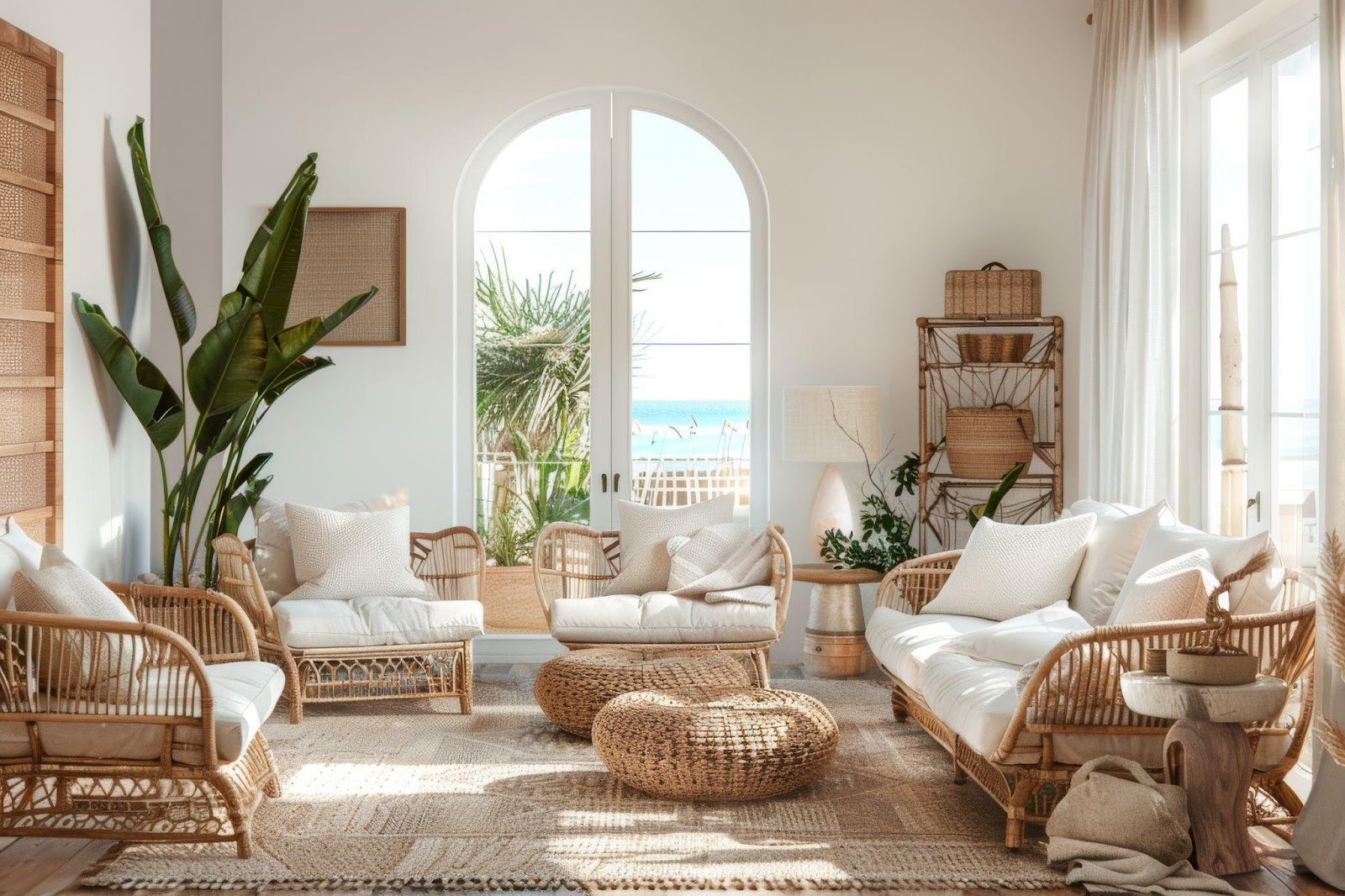Rattan furniture is experiencing a significant revival in 2025, blending timeless charm with contemporary relevance.
This beloved lightweight and flexible material first gained popularity during the colonial era and peaked in the mid-20th century. However, today, it’s finding the spotlight once again as more eco-conscious choices are embraced and nature-centric design trends are celebrated.
Its warm tones and natural textures pair seamlessly with minimalist, bohemian, or eclectic styles. Modern craftsmen are also reimagining rattan with sleek, innovative designs, making it a favorite for those seeking sustainable and stylish decor.
Rattan is sustainable, durable, and beautifully versatile, and no one agrees more than Harvey G. Schwartz, an expert who has spent over five decades championing its use. “I love the beauty of rattan itself,” he says simply.
With its low environmental impact and adaptability to modern tastes, rattan furniture appeals to both nostalgic and forward-thinking consumers.
The Roots of Rattan Design
Rattan furniture became a staple of the most stylish homes in the 1970s, symbolizing leisure and relaxation. Its exquisite, woven aesthetic was well suited to sun-drenched patios and breezy interiors, creating a timeless association with casual luxury.
Schwartz, a Los Angeles-based dealer, has been a consistent champion of the aesthetic over the years and has worked tirelessly to preserve and elevate its legacy.
“Rattan is associated with happiness; it’s associated with relaxation and coolness,” says Schwartz, who is also known as ‘The Rattan Man’.
Sometimes, all it takes is for one person to keep something treasured in the spotlight, but Schwartz’s journey to becoming the world’s foremost expert in rattan furniture is as fascinating as the material itself. Initially an aerospace engineer for NASA during the 1960s, Schwartz pivoted to furniture design after leaving the space industry.
“I went from designing for the stratosphere to curating earthly treasures,” says Schwartz. His passion for vintage furniture led him to open Harvey’s on Beverly in 1969, later expanding into Tropical Sun Rattan.
Today, his private collection includes some of the most sought-after mid-century rattan pieces, especially designs by the legendary Paul T. Frankl.
The Enduring Influence of Paul T. Frankl
In fact, it was Paul T. Frankl who initially revolutionized rattan furniture, transforming it from a humble material into a symbol of sophistication. His iconic ‘Pretzel’ armchairs and tropical-inspired designs captivated Hollywood’s elite, including silver screen favorites Fred Astaire, Charlie Chaplin, Katharine Hepburn, and architect Frank Lloyd Wright.
With that kind of pedigree, it’s no wonder those with a nostalgic eye have brought rattan back into public consciousness.
“Paul T. Frankl’s work is a testament to the enduring appeal of rattan furniture,” Schwartz notes.
Schwartz’s efforts to preserve Frankl’s work have solidified his status as a design historian, with several pieces from his collection displayed at the Los Angeles County Museum of Art.
Sustainability: The Key to Rattan’s Resurgence
Rattan is a sustainable material, an attribute that many people are looking for today, and because of that it’s an obvious choice for those who are eco-minded.
While the manufacturing process for rattan furniture production is relatively rudimentary, this tropical vine proliferates throughout the jungles of Southeast Asia, and is highly renewable.
Often crafted by skilled artisans, it doesn’t require extensive manufacturing facilities in order to create its final product. Growing at a rate of around 2cm per day, the vine is ready to harvest within two to three years; a process that is much faster than wood.
In an era where sustainability influences buying decisions, rattan’s low environmental impact gives it an edge. Harvested responsibly, it regenerates quickly, making it an eco-friendly alternative to synthetic materials.
“With proper care, rattan can last decades,” Schwartz says. “Many of the pieces I’ve restored are nearly 100 years old and still look stunning.”

Rattan: A Superstar In Its Own Right
In our social media-driven world, Rattan has also become highly appealing to influencers and has been praised by many modern celebrities for its cool aesthetic.
Rattan’s connection to Hollywood glamour has helped sustain its appeal. Schwartz’s pieces have even furnished the living spaces of Tinseltown’s brightest stars, including Barbra Streisand, who bought a set for her first Malibu home.
Today, celebrities such as Reese Witherspoon and Cara Delevingne have embraced rattan, further solidifying its place in modern design. The TV show The Golden Girls is also experiencing its own renaissance. In 1984, the show’s designers knocked on Schwartz’s door, looking for furniture. His sofa and chairs went on to adorn the show’s set for many years.
“Back then, I was on Melrose, in a 4,000-square-foot shop. They gave me the fabric, and I made the cushions, and they put it in the show right from my storeroom,” Schwartz says of that time.
A Stylish And Sought-After Legacy
Today, buyers will scour the world for original rattan. Schwartz understands how important it is to preserve the furniture so it can find continued use, and he’s one of the first stops when people go looking for treasured pieces.
His private collection, featuring some of the rarest Frankl designs, is now available to the public. Each piece reflects his commitment to maintaining the authenticity and craftsmanship of mid-century rattan.
“Paul T Frankl’s ability to transform a humble material into elegant, modern pieces has left an indelible mark on design history,” says Schwartz.
The Enduring Appeal of Rattan
The ‘Rattan Renaissance’ has undoubtedly come from its eco-charm and versatility, ensuring its place in contemporary homes, whether in statement chairs, light fixtures, or full furniture sets.
The furniture’s comeback in 2025 underscores its timeless appeal and adaptability to evolving tastes. As a symbol of sustainability, elegance, and comfort, it resonates with both design enthusiasts and eco-conscious consumers.
And with champions like Harvey G. Schwartz preserving its legacy, rattan furniture is not just a relic of the past but a beacon for the future. Whether vintage or contemporary, it continues to transform spaces with its enduring charm and versatility.
For more information about Harvey’s Private Collection, visit Harvey’s Private Collection.
His extensive collection can be seen at Tropical Sun Rattan.